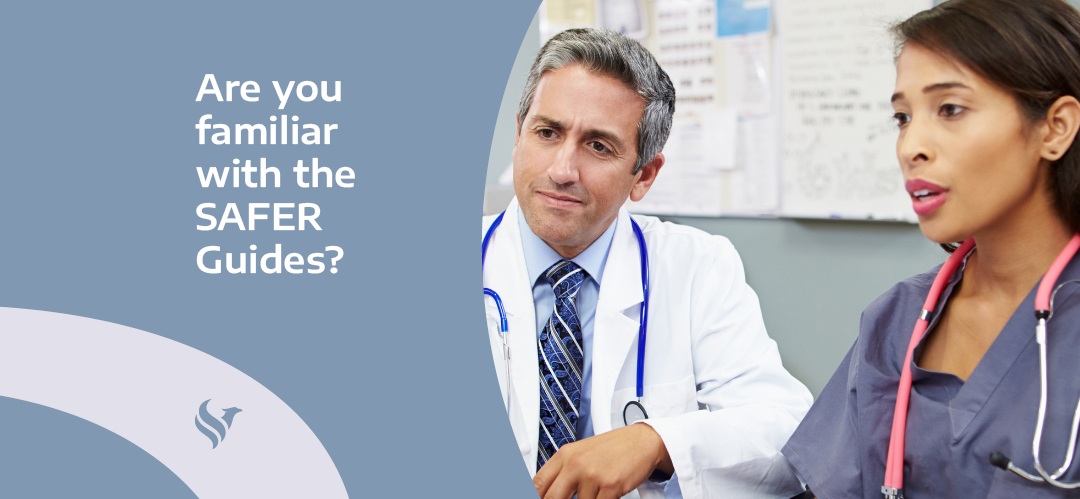Vice President of Clinical Strategies
When it comes to a facility disaster plan, we are all aware of the requirements, policies, and procedures needed. However, one plan that is less well-known and often gets overlooked is the SAFER Guides. Until recently, the SAFER Guides were rarely ever mentioned, and it’s possible you’ve never even heard of them. So, what has changed? As of 2022, a new payment system called the Inpatient Proposed Payment Systems (IPPS) requires hospitals and critical care access hospitals to use the SAFER guides to complete an annual audit of their EHR. Due to this new ruling – the SAFER Guides are moving into the limelight and catching the ear of many ASC leaders.
Implementing an EHR requires considerable thought into policies and procedures surrounding user access, record completion, training, and support. But the bigger picture that will allow centers to address EHR safety in other areas of concern need a concise, simple checklist of what to do, who should do it, and when it needs to be completed. The SAFER guidelines do precisely that. These guides are self-assessment tools that assist in identifying the risks and helping to prioritize, resolve, or minimize them. While they are not mandatory in ASCs, can we be far behind? Regardless, they are an excellent way to ensure you have thought through the processes you hope you rarely need to use.
Did you know?
- The word SAFER stands for Safety Assurance Factors for EHR Resilience.
- A group of ONC system IT safety researchers, alongside government agencies, created the guides.
- They were released in 2014 and updated in 2016.
The SAFER Guides consist of nine different guides organized into three broad groups listed below. Each Guide is divided into sections.
Foundational Guides
- High Priority Practices (social and technical safety)
- People responsible for the implementation, maintenance, and use
- Access, availability, and security
- Policies and procedures
- Organizational Responsibilities (activities, processes, and tasks focused on human behavior and relationships)
- Activities to optimize EHR quality and data quality
- Activities to ensure that the EHR is preventing safety hazards
- Activities to ensure that EHR information is available
- Activities to help the organization learn from the EHR efforts to reduce safety hazards
Infrastructure Guides
- Contingency Planning (planned and unplanned EHR downtime)
- System Configuration (hardware and software configuration practices)
- System Interfaces (interoperability)
Clinical Process Guides
- Patient Identification (reliable patient identification processes)
- Computerized Provider Order Entry with Decision Support (safe practices, logic, and algorithms associated with the CPOE and CDS)
- Test Results Reporting and Follow-Up (communication, management, and follow-up)
- Clinician Communication (consults, referrals, discharge planning, and communication between providers)
The checklist in each Guide contains recommended practices for EHR safety at each stage of implementation and use. The checklists are downloadable and provide fillable circles to indicate the extent to which each recommended practice has been implemented. Along with the Checklist, a Practice Worksheet offers a rationale for and examples of how to implement each recommended approach, likely sources of assessment input of each practice, and fillable fields to record team members and follow-up action. Each SAFER Guide can be found on ONC’s website and includes interactive references and supporting materials.
Tips for Success
You will need the assistance of people both within and outside the organization (e.g., EHR technology developers, diagnostic services providers) to complete sections of these guides. Your EHR vendor will have the answers to some questions in the High Priority Practices section and both system configuration and interfaces. They should also be able to assist with CPOE and CDS algorithms and logic. They should be willing and able to answer these questions and provide them during the implementation process before you go live. You should check with them each year when you audit for the most current versions of this information.
When an EHR “disaster” happens, you will be glad you have stepped through these guides and are not trying to decide on processes while simultaneously dealing with downtime or access breaches. These guides are meant to be helpful and not an additional burden. One person is not responsible for providing all the information. They can be completed by multiple team members and take several weeks or months to gather all the answers or design a policy/procedure to address the concerns. But the “head in the sand” approach will not serve you well down the road. Now is an excellent time to download the guides and see which areas you need to work on and tackle them one at a time.
EHRs are now a vital part of patient health care and positive outcomes. We need to embrace technology and plan for the future. Conducting a review of your system with these guidelines is an excellent place to start.
Don’t miss out on the good stuff – Subscribe to HST’s Blog & Podcast!
Every month we’ll email you our newest podcast episodes and articles. No fluff – just helpful content delivered right to your inbox.
